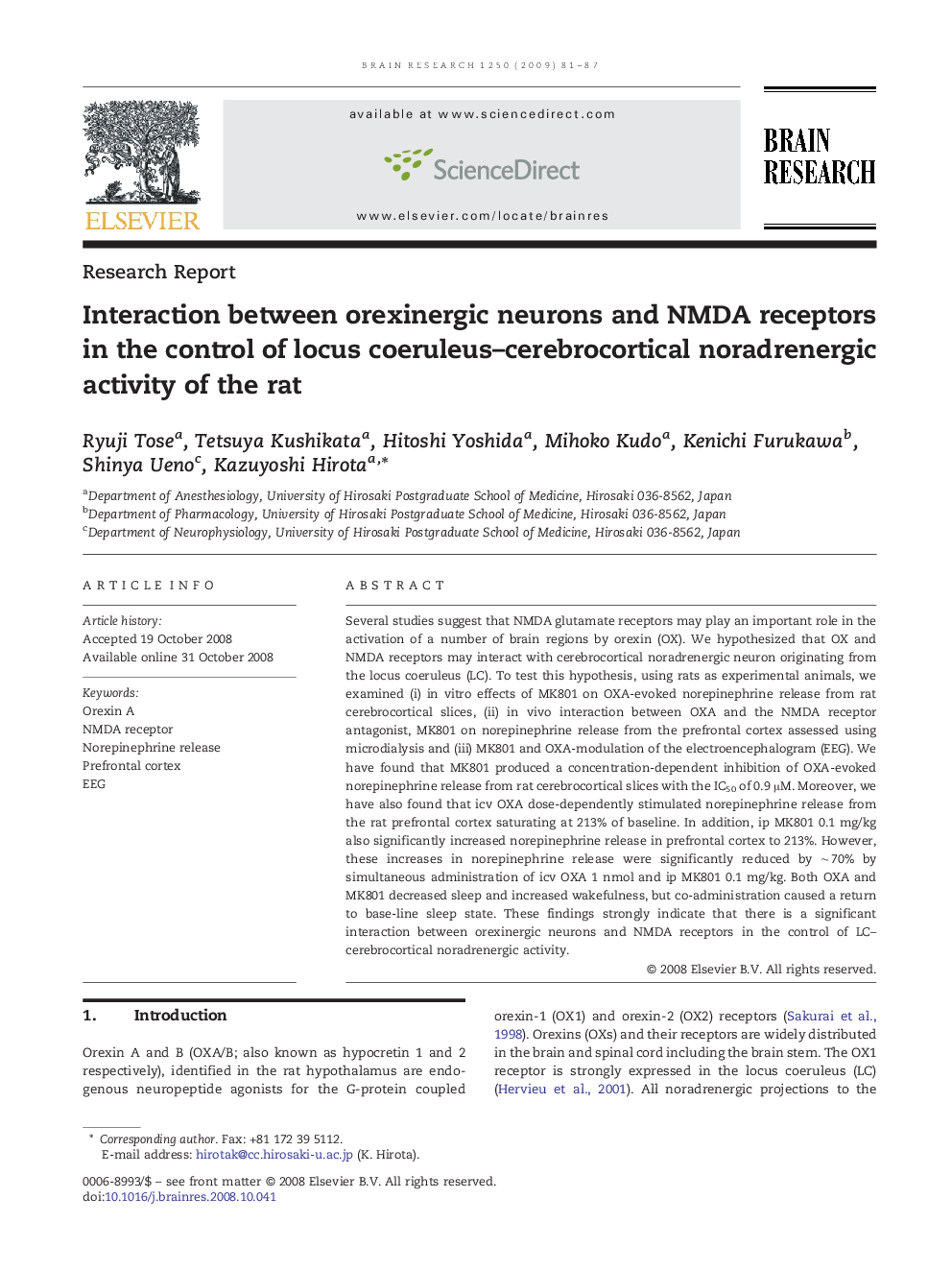| Article ID | Journal | Published Year | Pages | File Type |
|---|---|---|---|---|
| 4328715 | Brain Research | 2009 | 7 Pages |
Abstract
Several studies suggest that NMDA glutamate receptors may play an important role in the activation of a number of brain regions by orexin (OX). We hypothesized that OX and NMDA receptors may interact with cerebrocortical noradrenergic neuron originating from the locus coeruleus (LC). To test this hypothesis, using rats as experimental animals, we examined (i) in vitro effects of MK801 on OXA-evoked norepinephrine release from rat cerebrocortical slices, (ii) in vivo interaction between OXA and the NMDA receptor antagonist, MK801 on norepinephrine release from the prefrontal cortex assessed using microdialysis and (iii) MK801 and OXA-modulation of the electroencephalogram (EEG). We have found that MK801 produced a concentration-dependent inhibition of OXA-evoked norepinephrine release from rat cerebrocortical slices with the IC50 of 0.9 µM. Moreover, we have also found that icv OXA dose-dependently stimulated norepinephrine release from the rat prefrontal cortex saturating at 213% of baseline. In addition, ip MK801 0.1 mg/kg also significantly increased norepinephrine release in prefrontal cortex to 213%. However, these increases in norepinephrine release were significantly reduced by â¼Â 70% by simultaneous administration of icv OXA 1 nmol and ip MK801 0.1 mg/kg. Both OXA and MK801 decreased sleep and increased wakefulness, but co-administration caused a return to base-line sleep state. These findings strongly indicate that there is a significant interaction between orexinergic neurons and NMDA receptors in the control of LC-cerebrocortical noradrenergic activity.
Related Topics
Life Sciences
Neuroscience
Neuroscience (General)
Authors
Ryuji Tose, Tetsuya Kushikata, Hitoshi Yoshida, Mihoko Kudo, Kenichi Furukawa, Shinya Ueno, Kazuyoshi Hirota,
